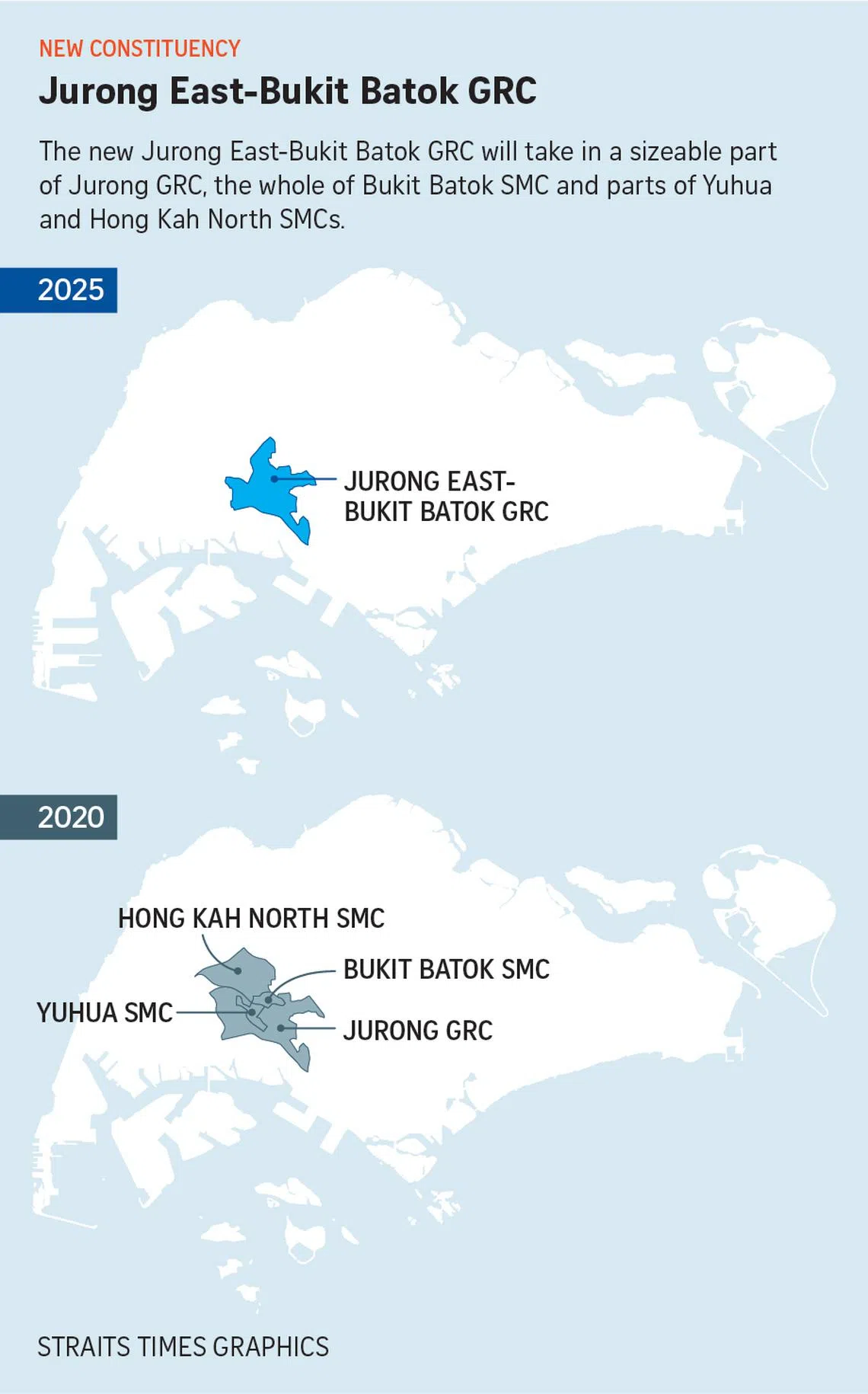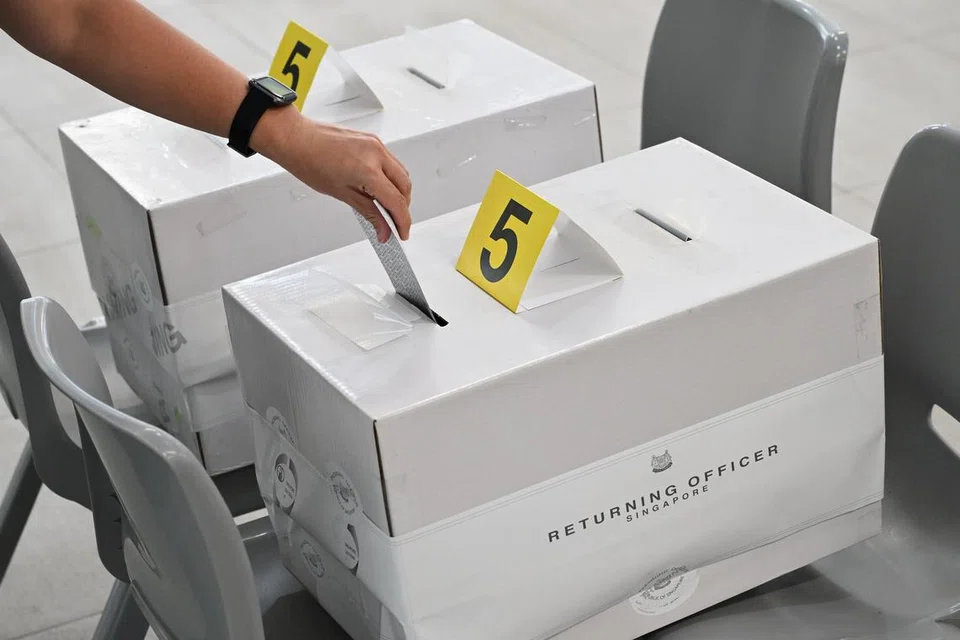Opposition parties review strategies, rally support despite gripes over boundary changes
The opposition parties said they will continue to walk the ground as they firm up their plans for the general election.ST PHOTO: KUA CHEE SIONG
Kok Yufeng and
Ang Qing
Mar 15, 2025, 05:30 AM
SINGAPORE – Several opposition parties are reviewing their strategies after changes to the electoral map, with some labelling themselves underdogs to drum up support and raise funds for the hustings.
The parties also said they will continue to walk the ground as they firm up their plans for the general election, which is widely expected by mid-year.
Workers’ Party member Harpreet Singh Nehal – who has been spotted on walkabouts in Marine Parade GRC and is likely to contest the upcoming polls – said the WP is not daunted by the
redrawing of MacPherson SMC into the newly christened Marine Parade-Braddell Heights GRC.
“If anything, this only strengthens our resolve,” Mr Singh wrote in a Facebook post on March 14.
PAP MP Tin Pei Ling retained MacPherson with 71.74 per cent of the vote in the 2020 General Election.
Mr Singh, a senior counsel, added that the WP has never been one to shy away from a challenge.
“We will continue to walk the ground, engage Singaporeans, and fight for a fairer, more balanced political landscape – wherever the lines are drawn,” he said.
Workers’ Party member Harpreet Singh Nehal, who is likely to contest the upcoming general election,and fellow party member Gerald Giam, an MP for Aljunied GRC, in Bedok in 2023.PHOTO: THE WORKERS’ PARTY/FACEBOOK
As for its electoral plans, the WP has kept its cards close to its chest. After the
Electoral Boundaries Review Committee (EBRC) report was released on March 11, the party noted the significant changes to areas where it has been working consistently for the past few years. It said it will provide more information soon on the likely seats it will contest and its potential candidates.
The Progress Singapore Party (PSP), which narrowly lost West Coast GRC in 2020 with 48.32 per cent of the vote, on March 12 said the
major electoral boundary shifts in western Singapore have made it harder for the party to enter Parliament. The party will study the EBRC report before making further announcements on where it will contest.
It has since issued a rallying call for donations and volunteers for its campaign. The donations to PSP will be used for fliers, posters and other campaign materials to “level the playing field”, the party added.
PSP secretary-general Hazel Poa, in a Facebook post on March 12, said: “We have an uphill battle to fight this GE.”
Progress Singapore Party secretary-general Hazel Poa with fellow party member Leong Mun Wai. The party says the major electoral boundary shifts in western Singapore have made it harder for it to enter Parliament.ST PHOTO: BRIAN TEO
She told The Straits Times that more than 40,000 new voters from over 100 HDB blocks have become part of the new West Coast-Jurong West GRC, and said the party will walk the ground over the next few weeks to engage them.
The new GRC will take in Taman Jurong ward and parts of Jurong Spring from the existing Jurong GRC.
Singapore Democratic Party (SDP) chief Chee Soon Juan, who made inroads in Bukit Batok SMC in 2020 with a 45.2 per cent vote share, said on March 12 he would have to rethink his election strategy, and promised to provide an update on his plans in the next few days.
Singapore Democratic Party chief Chee Soon Juan made inroads in Bukit Batok in 2020 with a 45.2 per cent vote share. The single-member constituency will be absorbed by the new Jurong East-Bukit Batok GRC.PHOTO: ST FILE
Bukit Batok will be absorbed by the new Jurong East-Bukit Batok GRC after the latest changes to the electoral boundaries.
In a pre-recorded video posted on social media, Dr Chee called for people to sign up as volunteers or buy seats for a series of fund-raising dinners in early April.
SDP said it has held meetings, involving both its central executive committee and various working groups, over the past few days to evaluate the next steps. It added that it will keep up with the groundwork “where it makes sense to” in the meantime.
Red Dot United (RDU) said the party’s election committee held internal discussions immediately after the release of the EBRC report on March 11.
The party has since declared its interest in contesting six constituencies where it said it has built a presence, but said its claims are still preliminary at this stage.
Red Dot United leader Ravi Philemon. The party says it has been disadvantaged by the dissolution of Jurong GRC, which it contested in 2020, but is confident that it can adapt to the changes.PHOTO: LIANHE ZAOBAO
An RDU spokesman said the party will need more time to analyse the changes. He added that RDU has been disadvantaged by the dissolution of Jurong GRC, which it contested in 2020.
But he also expressed confidence that the party can adapt to the changes, noting that almost 70 per cent of the voters from Jurong GRC are now in the new constituencies of Jurong East-Bukit Batok GRC and Jurong Central SMC. “We remain committed to serving these residents,” he said.
Political observers have said the boundary changes in the east are expected to
make it more difficult to predict the election results there.
In the north-east, WP has had an interest in the Punggol area for some time, and contested Punggol West in 2020. The single-seat constituency will now be part of a newly created four-member Punggol GRC.
Staking a claim for Punggol could put the WP in a multi-cornered fight with the Singapore Democratic Alliance (SDA), which has contested in Pasir Ris-Punggol GRC at every election since 2006.
SDA chairman Desmond Lim has said his party will hold talks with the WP. “It’s still early days... So, we will continue our usual engagement activities to understand the concerns of residents first,” he said.
Political observers had mixed views about the impact of the boundary changes on opposition parties, and the potential for more multi-cornered fights.
In all, five opposition parties have staked claims on 21 out of the 33 constituencies for the 2025 polls, with overlapping interests in four SMCs and four GRCs.
Singapore Democratic Alliance chairman Desmond Lim could see overlapping interest in the Punggol area with the Workers’ Party, and has said his party would hold talks with WP.ST PHOTO: MARK CHEONG
Ms Nydia Ngiow, managing director at policy advisory firm BowerGroupAsia’s Singapore office, said the newly drawn battle lines are unlikely to have a significant impact on the larger parties but could pose more difficulty for the SDP, given the headway that Dr Chee has made in Bukit Batok.
She said: “SDP would now need to pivot to a GRC strategy there.” She added that she also did not rule out the possibility of SDP turning to Bukit Gombak, where the party won in 1991.
Dr Mustafa Izzuddin said it is understandable that the opposition parties would have grievances with the boundary changes given the effort they have put into specific areas, but they would have to adapt and evolve their political strategies.
“Boundary changes do not necessarily mean the votes in carved-out constituencies will go to the ruling party, although the prospect for the PAP is greater, as the ruling party may currently have elected MPs in those carved-out constituencies who oversee the needs of the electorate,” said the senior international affairs analyst at Solaris Strategies Singapore.
Political analyst Loke Hoe Yeong said the EBRC changes have set the stage for multi-way fights.
For instance, the carving out of three polling districts from the WP-held Aljunied GRC to Tampines GRC would give the WP the impetus to contest there. The National Solidarity Party has been contesting the GRC over the past elections, he added.
“That would be far more ruinous to the small opposition parties,” Mr Loke said. He added that the usual horse-trading talks have become less relevant for an opposition party like WP but will be vital to the smaller ones.
Ms Ngiow said any multi-cornered contests could end up splitting the votes and benefiting the incumbent. She added that any negotiations will need to be done quickly as the release of the EBRC report means time is not on the opposition’s side.
On the other hand, Nanyang Technological University Associate Professor Walid Jumblatt Abdullah said multi-cornered fights are not an issue in his view as there should be no limitations on who can contest a seat in a democracy.
But he agreed that in these situations, the smaller parties are unlikely to get sufficient votes to recover their election deposits.
RDU said it is not in its interest to be in three-cornered fights, and it will engage the other opposition parties “when the time is right”. It added: “There is enough familiarity and friendship among us to work these matters out amicably.”
In the 2020 polls, the opposition parties were able to hammer out pacts with one another without the usual big meeting among party leaders, though there were still two three-cornered contests in Pasir Ris-Punggol GRC and Pioneer SMC.
Mr Goh Meng Seng, secretary-general of the People’s Power Party (PPP), said he intends to meet other parties and hold discussions, but he will leave it to the bigger parties like PSP and SDP to call for a meeting.
People’s Power Party secretary-general Goh Meng Seng says he intends to meet other parties for discussions but will not shy away from a three-cornered fight if differences cannot be resolved.ST PHOTO: GIN TAY
Mr Goh, whose party has expressed interest in contesting five wards at the 2025 polls, also said he does not intend to shy away from a three-cornered fight if differences cannot be resolved.
In the meantime, he said the PPP is focusing its efforts on training its candidates for the hustings. “I believe that voters now are more discerning and will realise that big brands don’t always guarantee quality,” he added.















![ST20250122-202527400313-Lim Yaohui-pixgeneric/[HDB] [HOUSING]New blocks of Tampines GreenGem HDB BTO flats as viewed from Blk 953B Tampines Street 96 on Jan 22, 2025.Can be used for stories on budget, money, invest, URA, property, land, housing, population, economy, and development.(ST PHOTO: LIM YAOHUI) ST20250122-202527400313-Lim Yaohui-pixgeneric/[HDB] [HOUSING]New blocks of Tampines GreenGem HDB BTO flats as viewed from Blk 953B Tampines Street 96 on Jan 22, 2025.Can be used for stories on budget, money, invest, URA, property, land, housing, population, economy, and development.(ST PHOTO: LIM YAOHUI)](https://cassette.sphdigital.com.sg/image/straitstimes/001e32a51fb5c329b76f7cdcf3f70694068fee75e3607384a772822c3206c8ae?w=860)



















